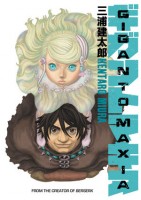Can the market support another zombie comic? That’s the question at the heart of this week’s column, as I examine Kengo Hanazawa’s I Am a Hero, a manga about a geeky artist living through a zombie apocalypse. Bone appetit!
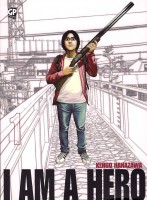 I Am a Hero, Vol. 1
I Am a Hero, Vol. 1
By Kengo Hanazawa
Rated Older Teen, for ages 16+
Dark Horse, $19.99
At first glance, I Am a Hero looks like a Walking Dead clone, complete with gun-toting vigilantes and hungry zombie hordes. Peel back its gory surface, however, and it becomes clear that I Am a Hero is really a meditation on being trapped: by a dead-end job, by thwarted expectations, and by fears, real and imagined.
The “hero” of Kengo Hanazawa’s series is thirty-five-year old Hideo Suzuki. Though Hideo tasted success with the publication of his own manga, his triumph was short-lived: Uncut Penis was cancelled just two volumes into its run. He now toils as a mangaka’s assistant, working alongside other middle-aged artists whose professional disappointment has curdled into misogyny and grandiosity.
Compounding Hideo’s problems is his fragile mental state. He hallucinates, talks to himself, and barricades the door to his apartment against an unspecified threat, in thrall to the voices in his head. Despite his tenuous grasp on reality, Hideo is the only one of his co-workers who notices the small but telling signs that something is deeply amiss in Tokyo. Hideo soon realizes that his long-standing fears might actually be justified, and must decide whether to hunker down or flee the city.
Getting to Hideo’s do-or-die moment, however, may be a challenge for some readers. The first act of I Am a Hero is a tough slog: not only does it focus on a cluster of strenuously unpleasant characters, it documents their daily routines in painstaking detail. The tedium of these early chapters is occasionally punctuated by vivid, unexplained imagery that calls into question whether the zombies exist or are a figment of Hideo’s imagination. What the reader gradually realizes is that Hideo’s paranoia makes him alive to the possibility of catastrophe in a way that his bored, self-involved co-workers are not; they’re too mired in everyday concerns to notice the growing body count, a point underscored by the banality of their workplace conversations, and their shared belief that women are the real enemy.
When the zombie apocalypse is in full swing, Hanazawa delivers the gory goods: his zombies are suitably grotesque, retaining just enough of their original human form to make their condition both pitiable and disturbing. Hanazawa stages most of the action in tight spaces–an artist’s studio, a pedestrian footbridge, a hallway–giving the hand-to-hand combat the stomach-churning immediacy of a first-person shooter game. Only when Hanazawa cuts away to reveal a fire-ravaged, chaotic landscape do we fully appreciate the extent to which Tokyo has succumbed to the zombie plague.
It’s in these final moments of the book that Hideo glimpses an alternative to his miserable existence–the loneliness, anonymity, and failure that, in his words, have prevented him “from being the hero of my own life.” How he escapes these emotional traps–and those pesky zombies–remains to be seen, but it seems like a journey worth taking. Count me in for volume two.
A word to parents: I Am a Hero is less gory than either The Walking Dead or Fear the Walking Dead, but contains scenes of disturbing violence and frank sexual content. Dark Horse’s suggested age rating seems appropriate for this particular title.
Reviews: At Brain vs. Book, Jocelyn Allen looks at two untranslated series: Akina Kondoh’s A-ko-san no Koibito, a josei manga about a woman juggling two love interests, and Machiko Kyo’s Nekojou Mu-Mu, a comic about an outrageously cute cat. Matt Brady, host of Warren Peace Sings the Blues, weighs in on the third installment of JoJo’s Bizarre Adventure: Phantom Blood. And at Three if By Space, Robert Prentice explains why My Hero Academia is truly a comic for all ages.
- Manjiorin on The Birth of Kitaro (The OASG)
- Demelza on Blood C: Demonic Moonlight (Anime UK News)
- Adrienne on Cute Life of Mary and Lola (Heart of Manga)
- Che Gilson on vol. 1 of Fairy Girls (Otaku USA)
- Tony Yao on Food Wars: Shokugeki no Soma (Manga Therapy)
- Marissa Lieberman on vol. 1 of Gakkyu Hotel: School Judgment (No Flying No Tights)
- A Library Girl on vol. 7 of His Favorite (A Library Girl’s Familiar Diversions)
- Michael Burns on vol. 2 of How to Raise a Boring Girlfriend (AniTAY)
- Steve Foxe on vol. 1 of I Am a Hero (Paste Magazine)
- Svetlana Fedotov on vol. 1 of I Am a Hero (Fangoria)
- Helen on Itihasa (The OASG)
- Anna N. on vol. 20 of Kamisama Kiss (Manga Report)
- Khursten Santos on Minori no Te (Otaku Champloo)
- Saeyong Kim on vol. 1 of Monthly Girls’ Nozaki-Kun (No Flying No Tights)
- Sean Gaffney on vol. 3 of Monthly Girls’ Nozaki-Kun (A Case Suitable for Treatment)
- Gabe Peralta on vol. 3 of Monthly Girls’ Nozaki-Kun (The Fandom Post)
- Gabe Peralta on vol. 1 of My Youth Romantic Comedy Is Wrong as I Expected (The Fandom Post)
- Ken H. on vol. 1 of Mysterious Girlfriend X (Sequential Ink)
- Kory Cerjak on vol. 1 of Mysterious Girlfriend X (The Fandom Post)
- Matthew Alexander on vol. 11 of Path of the Assassin (The Fandom Post)
- Matthew Alexander on vol. 12 of Path of the Assassin (The Fandom Post)
- Jason Thompson on vol. 1 of Princess Jellyfish (Otaku USA)
- Nic Willcox on vol. 1 of Puella Magica Homura Tamura (No Flying No Tights)
- David Brooke on vol. 2 of Real Account (AiPT!)
- Rebecca Silverman on vol. 4 of Requiem of the Rose King (Anime News Network)
- Lori Henderson on The Secret Sakura Shares (Manga Xanadu)
- Sarah on vol. 5 of Servamp (Anime UK News)
- Matt on vol. 7 of A Silent Voice (AniTAY)
- Jason Thompson on Sweetness & Lightning (Otaku USA)
- Nic Willcox on vol. 1 of Sword Art Online: Girls’ Ops (No Flying No Tights)
- Demelza on vol. 1 of To the Abandoned Sacred Beasts (Anime UK News)
- Daniel Boyd on vol. 3 of Ultraman (No Flying No Tights)
- Sarah on vol. 10 of What Did You Eat Yesterday? (Anime UK News)
- Sophie Knight on What Is Obscenity? The Story of a Good-for-Nothing Artist and Her Pussy (The Japan Times)
- Michelle Martinez on What Is Obscenity? The Story of a Good-for-Nothing Artist and Her Pussy (New York Journal of Books)
- ebooksgirl on vol. 12 of Yotsuba&! (Geek Lit Etc.)
- Marissa Lieberman on vol. 1 of Yowamushi Pedal (No Flying No Tights)
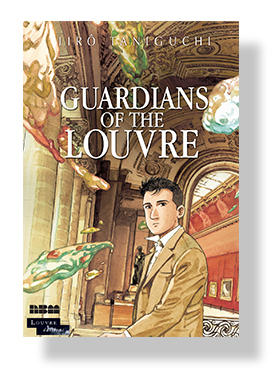 Guardians of the Louvre
Guardians of the Louvre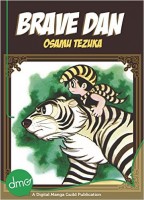 Brave Dan
Brave Dan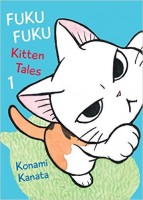 FukuFuku: Kitten Tales, Vol. 1
FukuFuku: Kitten Tales, Vol. 1
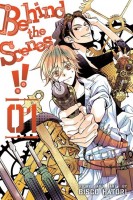 Behind the Scenes!!, Vol. 1
Behind the Scenes!!, Vol. 1